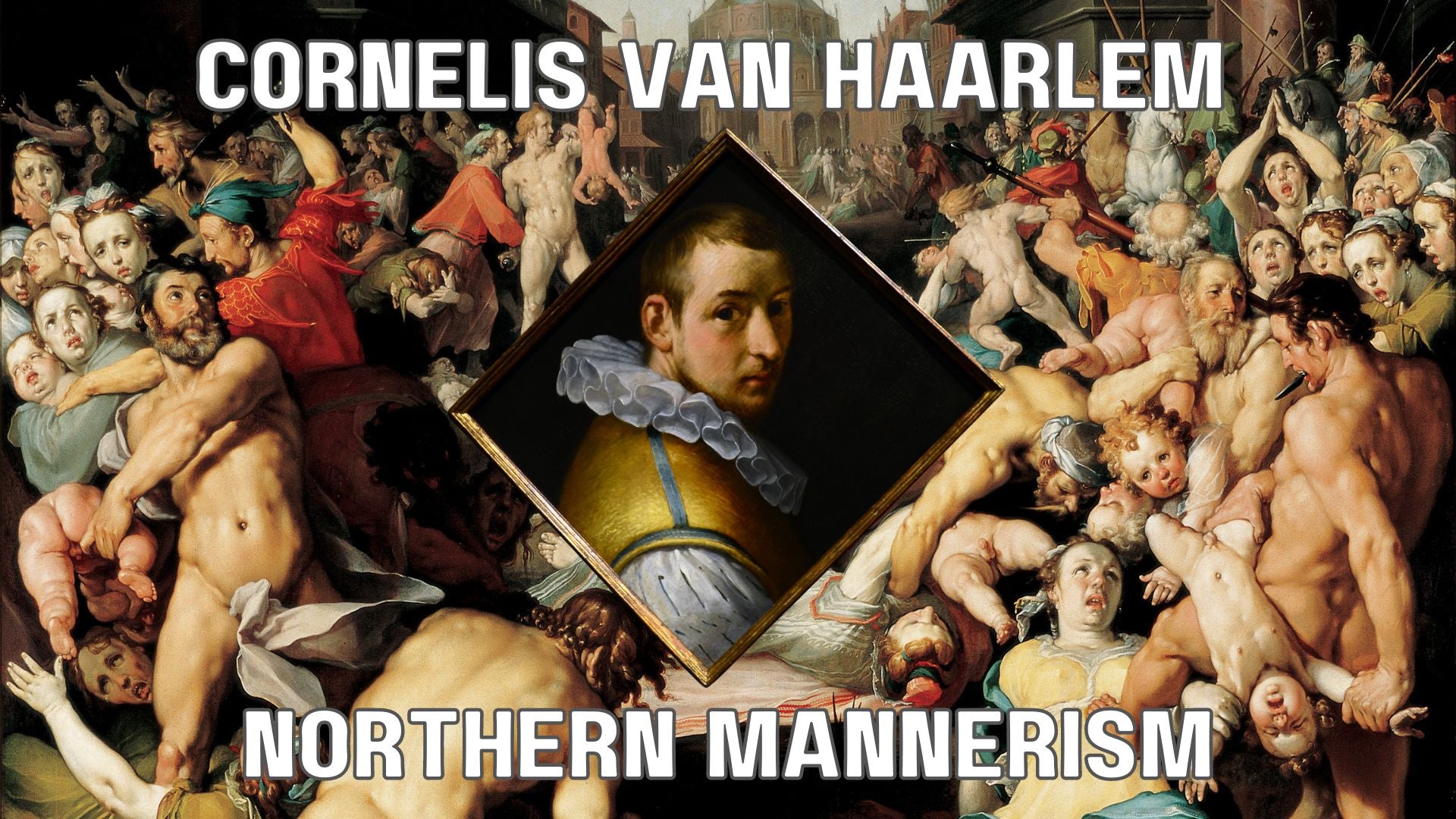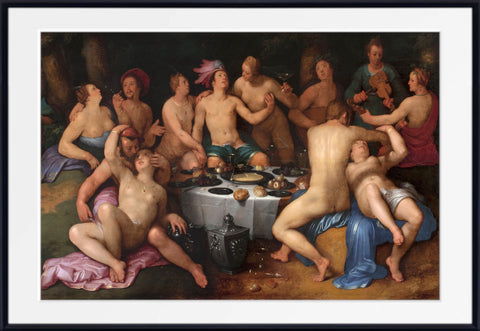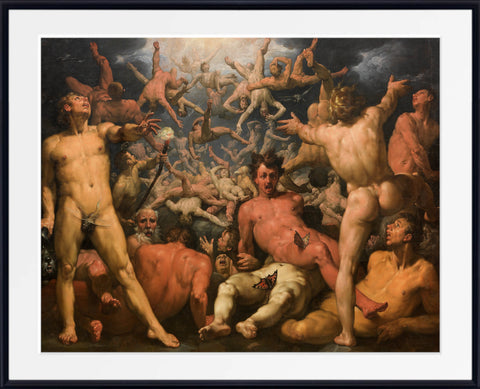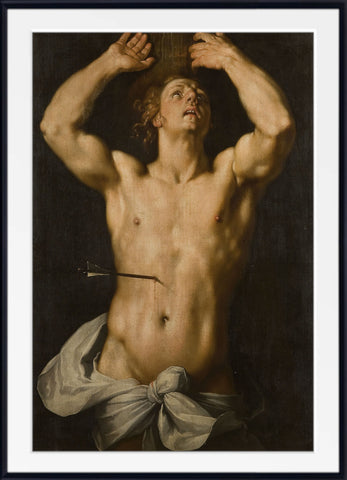Table of Contents:[hide]
Cornelis Corneliszoon van Haarlem, a prominent figure in the Dutch Golden Age of painting, stands as a testament to the rich artistic heritage of the Netherlands. His contributions to the art world, particularly in the realm of Northern Mannerism, have left an indelible mark on the annals of art history.
Biography
Born in Haarlem in 1562, Cornelis van Haarlem began his artistic journey under the tutelage of Pieter Pietersz and later honed his skills under Gillis Coignet in Antwerp. He was a pivotal figure in the Haarlem Mannerist movement, heavily influenced by Bartholomeus Spranger's works, which were introduced to Haarlem by Carel van Mander in 1585. Initially, his style reflected Italianate influences, characterized by exaggerated poses and unnatural anatomy. However, over time, he transitioned towards a more Netherlandish realist tradition.
Works and Influence
Van Haarlem's oeuvre encompassed a wide array of subjects, including portraits, mythological narratives, and Biblical scenes. Notable among his works are "The Fall of the Titans" and "The Baptism of Christ," showcasing his mastery of composition and dramatic storytelling. His impact extended beyond his artistic creations; van Haarlem played a pivotal role in the establishment of the Haarlem Academy, an informal gathering of artists aimed at fostering artistic exchange and collaboration. His influence resonated through his pupils, including renowned painters such as Salomon de Bray and Cornelis Claesz Heda.
Legacy and Recognition
Van Haarlem's legacy endures through the preservation and display of his works in esteemed institutions worldwide. Paintings such as "The Fall of Ixion" and "Venus and Adonis" grace the walls of the Frans Hals Museum in Haarlem, the Rijksmuseum in Amsterdam, and the Louvre in Paris, among others. His contributions to Dutch art have earned him a lasting place in art historical discourse, with scholars and enthusiasts alike continuing to study and admire his accomplishments.
Conclusion
In conclusion, Cornelis van Haarlem emerges as a seminal figure in the Dutch Golden Age, revered for his technical prowess, artistic innovation, and enduring legacy. His journey from the halls of Haarlem to the international stage exemplifies the transformative power of art and its ability to transcend borders and generations.
Cornelis van Haarlem FAQ's
-
Who was Cornelis van Haarlem?
- Cornelis van Haarlem, born in 1562 in Haarlem, Netherlands, was a prominent Dutch Golden Age painter and draughtsman known for his contributions to the Northern Mannerist style.
-
What is Northern Mannerism?
- Northern Mannerism refers to a stylistic movement in art, primarily in the Netherlands, during the late Renaissance period. It is characterized by exaggerated proportions, complex compositions, and a departure from classical ideals.
-
What were Cornelis van Haarlem's main artistic influences?
- Van Haarlem was influenced by Bartholomeus Spranger, a Flemish artist, whose works introduced Italianate elements to the Dutch art scene. Additionally, his training under Pieter Pietersz and Gillis Coignet shaped his early style.
-
What subjects did Cornelis van Haarlem paint?
- Van Haarlem's repertoire included portraits, mythological narratives, and Biblical scenes. He was renowned for his dramatic compositions and meticulous attention to detail.
-
What are some notable works by Cornelis van Haarlem?
- Some of his notable works include "The Fall of the Titans," "The Baptism of Christ," "The Wedding of Peleus and Thetis," and "The Prodigal Son."
-
What impact did Cornelis van Haarlem have on Dutch art history?
- Van Haarlem was a leading figure in the Haarlem Mannerist movement and played a pivotal role in the establishment of the Haarlem Academy. His influence extended through his pupils and his contributions earned him recognition as a significant artist of the Dutch Golden Age.
-
Where can one view Cornelis van Haarlem's artworks?
- Paintings by Cornelis van Haarlem are displayed in prestigious institutions worldwide, including the Frans Hals Museum in Haarlem, the Rijksmuseum in Amsterdam, and the Louvre in Paris.
-
What was Cornelis van Haarlem's artistic style characterized by?
- Initially influenced by Italianate styles, van Haarlem's early works featured exaggerated poses and fantastical elements. However, he later transitioned to a more Netherlandish realist tradition, characterized by intricate detail and nuanced storytelling.
-
Did Cornelis van Haarlem have any notable pupils?
- Yes, van Haarlem's influence extended to several renowned painters, including Salomon de Bray and Cornelis Claesz Heda, who were among his registered pupils.
-
What is Cornelis van Haarlem's legacy in the art world?
- Cornelis van Haarlem's legacy endures as a testament to his technical prowess, artistic innovation, and enduring influence on Dutch art history, particularly in the Northern Mannerist style. His works continue to be studied and admired by scholars and art enthusiasts worldwide.
Prints and Canvas Panels
Fine art prints and ready to hang gallery quality canvas panels of Cornelis van Haarlem paintings are avaiable in a range of sizes with fast worldwide delivery.





